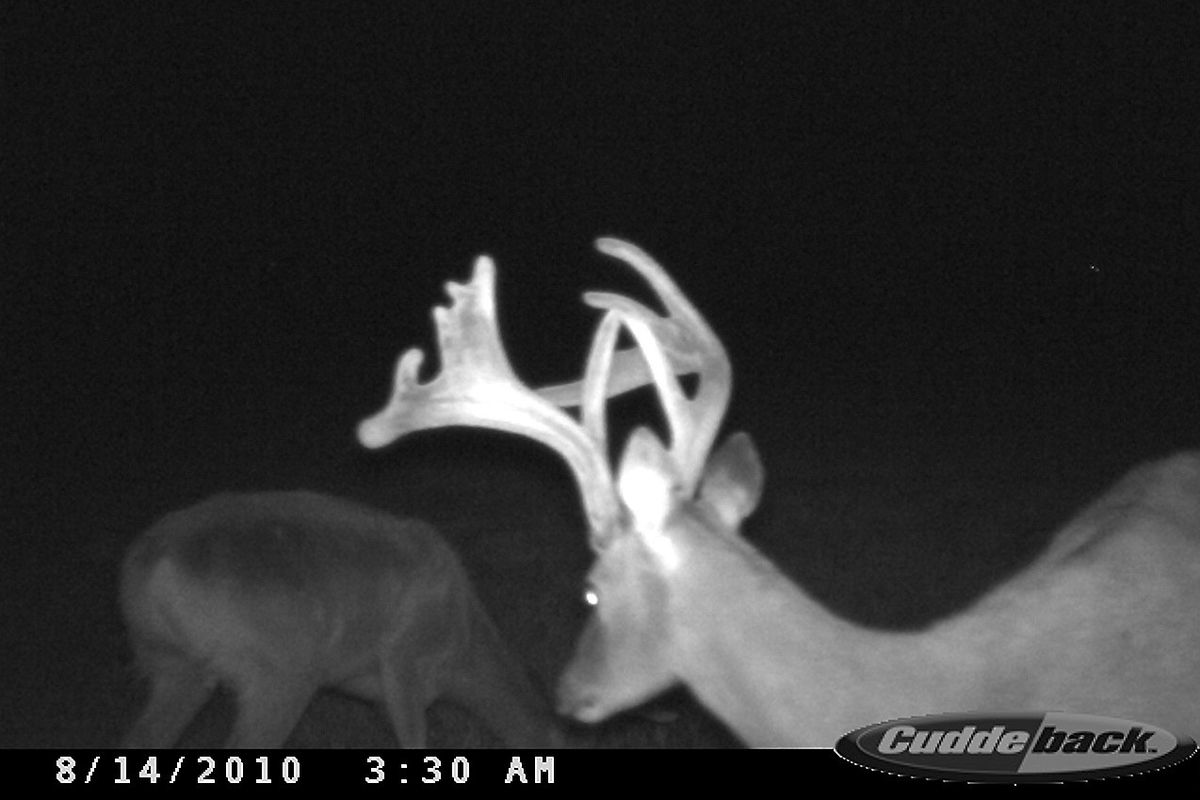Remote cameras leave little doubt

While most sportsmen continue to use the traditional scouting methods that include tracking and surveying with binoculars, an increasing number of hunters are using remote cameras.
Dozens if not hundreds of camera models are on the market and the technology is advancing in a blur.
The motion-activated cameras can record what moves in front of the camera lens night or day.
Even the new budget models generally have video capability and features such as “time” and “date stamp” to help hunters time animal movements.
The selection of remote digital cameras at Cabela’s in Post Falls ranges from $80 to $300, with high-resolution models and cameras that shoot with infrared technology to deliver night photos without a flash.
Some more expensive high-tech camera systems will snap a digital photo, send an e-mail message to your cell phone or computer that the camera shutter has been tripped, and then deliver the photo via wireless connection.
But sportsmen must be judicious about paying for features that might be geared more to home security than to monitoring wildlife.
“The model I know about will deliver the picture to a website where you can download it,” said Cabela’s salesman Jared Hansen. “But you have to pay a monthly fee for the service and you have to have AT&T cell service at the site of the camera. That’s hard to find out here where we hunt deer.”
Trail camera accessories include various mounting brackets, solar panels to keep the batteries charged and card viewers so you can read the camera’s SD card in the field without packing along a pocket digital camera or laptop computer.
“Some cameras have laser pointers to show where they’re aimed and built-in card viewers so you can test your camera to make sure its set up properly before you leave it,” Hansen said.
Beware of aiming the camera where it might point directly into the sun at anytime of day.
More expensive cameras usually have a delay of one second or less between the time the infrared sensor detects movement and the picture is made. Less expensive cameras can take several seconds to trigger, resulting in more pictures of animals’ bottoms.
Some of the more expensive cameras note not just the date and time on the image, but also moon phase and barometric pressure, allowing the hunter to relate deer movement to weather patterns.
Digital models store the pictures on a data card. The number of pictures depends on the card’s size, but a 256-megabyte card in a 4-megapixel camera at the highest resolution holds more than 500 images.
A four gigabyte card in a 3-megapixel camera will hold more than 3,000 photos.
Hunters don’t need to pay for a lot of megapixels for game watching, but some features are worth the expense, Hansen said.
“A faster trigger speed is definitely nice so a moving animal isn’t half out of the frame before the camera triggers,” he said.
An infrared flash, since it’s almost invisible, is less likely to spook an animal or be noticed by somebody.
“Some of the newer models use less energy and run on AA batteries longer than cameras that use C or D sizes,” Hansen said.
Some users recommend putting a camera in a locking security box so bears don’t tear it up.
But one solid piece of advice is useful across the board, regardless of the type of camera one buys:
“Read the instructions,” Hansen said. “Every camera is different.”